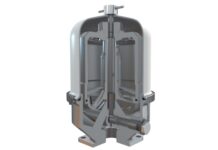
Markets accelerate at a pace that pressures corporate leaders to react with precision and confidence.
Boards face rising expectations to guide rapid shifts while maintaining strategic clarity.
The purpose is to highlight how external volatility and internal readiness push directors toward faster decisions.
Board’s Role in Fast-Paced Strategic Decisions

A fast-moving market places directors in a position that demands sharper awareness, quicker responses, and stronger alignment with executives.
Boards no longer operate as distant observers.
Pressure for immediate direction turns boardrooms into active strategic partners rather than slow-moving oversight bodies.
Shift Toward Active Participation
Greater involvement becomes necessary as organizations navigate volatility, new technologies, and shifting customer expectations.
Directors engage in continuous dialogue, offering guidance in real time instead of waiting for scheduled updates.
A few core behaviors support this shift:
- Ongoing monitoring of market signals and operational performance
- Frequent touchpoints with leadership to adjust priorities
- Adaptive responses when conditions change hour by hour
Real-time situational awareness grows into a critical skill, prompting directors to track shifts in demand, competitive moves, and emerging risks with far greater frequency.
Adjustment becomes a constant expectation rather than an episodic task.
Emphasis on Innovation and Risk Tolerance
Rapid change requires an innovation-forward stance.
Boards that cling to long approval chains slow progress and create barriers for teams attempting to test new ideas.
Directors play a decisive role in encouraging faster experimentation, a point stressed by Forbes.
Support for bold initiatives matters because:
- Faster trials reduce uncertainty and reveal better pathways for growth
- Calculated risks help organizations stay ahead of challengers
- Encouragement for experimentation gives teams confidence to move swiftly
Calculated risk-taking sharpens competitiveness and fuels quick adaptation when markets shift unexpectedly.
Capabilities Boards Must Develop to Keep Pace

A faster strategic rhythm requires new capabilities within boardrooms.
Directors benefit from expanded knowledge, stronger cross-functional insights, and operational fluency that allows them to respond with clarity and speed.
To support this evolution, resources like the Ned Capital Blog offer tailored guidance for current and aspiring Non-Executive Directors. Covering areas from boardroom readiness and private equity dynamics to the impact of AI on governance.
Cross-Functional, Agile Teams
Agile go-to-market structures allow organizations to operate in short cycles rather than long annual planning loops.
Chief Marketer highlights the value of cross-functional groups in improving decision speed and alignment.
Chick-fil-A offers a strong example. Agile collaboration during the pandemic allowed teams to:
- Rework service models rapidly
- Pilot new customer solutions within days
- Scale successful innovations across multiple locations
Such adaptability demonstrates why boards encourage structures that allow teams to adjust quickly under pressure.
Faster, Informed Decision-Making

Directors gain speed when they support strong coalition-building across the organisation.
Shared intent among leaders shortens decision cycles because teams move in unison rather than pulling in competing directions.
Benefits include:
- Clear interpretation of data
- Stronger internal coordination
- Faster approval flow
T-Mobile illustrates this mindset through data-driven scenario planning, helping leaders model several outcomes at once and commit to actions without delay.
Operational Agility and Process Redesign
Rigid procedures reduce responsiveness and block momentum.
Forbes underscores the need for organizations to streamline processes that slow execution.
Adaptive operations allow companies to react quickly in complex situations.
Amazon and Pfizer demonstrate how rapid scaling, reallocation of resources, and dynamic planning support fast responses.
Key enablers include:
- Simplified approval chains
- Modular processes that adjust rather than break
- Rapid cross-team communication
- Operational flexibility becomes a core engine for competitive readiness.
Tools and Technologies Empowering Speed
Faster decision-making increasingly depends on advanced tools that surface insights instantly, reveal patterns, and automate repetitive work.
Boards promote these technologies to strengthen both accuracy and pace.
Adoption of AI and Automation
AI expands an organization’s ability to test ideas rapidly, analyze customer input, and refine products in compressed timeframes.
Both Forbes and Chief Marketer emphasize AI’s role in accelerating insight generation.
Walmart showcases this by using AI to support:
- Quick customer engagement
- Fast prototyping cycles
- Continuous improvement of offerings
- Such technologies help teams move faster with clearer intelligence.
Real-Time Market Testing and Feedback Loops
Rapid iteration improves accuracy by grounding decisions in direct market input.
MVPs create small, testable versions of ideas that allow teams to gauge reactions before expanding investment.
Bullet points help illustrate their value:
- Faster validation reduces uncertainty
- Frequent adjustments sharpen product fit
- Ongoing feedback keeps strategy aligned with customer needs
Feedback loops accelerate learning and strengthen organizational agility.
Culture and Leadership Mindset Shifts

Speed depends on more than systems, data, and formal structures.
Cultural expectations and leadership attitudes shape how quickly an organisation moves during uncertain or fast-changing situations.
Boards influence this shift by promoting norms that welcome bold ideas, quick adjustments, and confident action.
Leaders who model agility signal that rapid progress is not an exception but an expected behaviour across functions.
Moving Toward Empowerment
Empowerment plays a central role in organisational speed.
Teams move faster when they are trusted to make decisions without prolonged approval cycles that drain momentum.
Directors support this by clarifying where authority sits, removing roadblocks, and encouraging executives to delegate decisions to those closest to the work.
A few principles reinforce this approach:
- Clear ownership that avoids overlapping responsibilities
- Authority for teams to adjust plans when new information appears
- Confidence in front-line decision-makers instead of top-heavy control
A test-and-learn mindset further accelerates progress.
Small trials replace slow debates, allowing teams to test assumptions quickly and refine ideas with less risk.
Such an approach shifts focus toward action, real evidence, and rapid improvement, helping organisations move ahead even in uncertain conditions.
Embedding Innovation into Core Culture

Innovation gains speed when it becomes part of daily routines rather than a special initiative run in isolated pockets.
Leaders who encourage experimentation, resilience, and honest communication create an environment where teams feel permission to challenge old habits and search for better solutions.
Chief Marketer highlights the value of integrating innovative behaviour into normal workflows, not just formal innovation programs.
When leaders show curiosity, ask teams to try new approaches, and celebrate progress rather than perfection, the pace of improvement increases naturally.
Key cultural practices include:
- Encouragement for small, rapid experiments
- Recognition for initiative and proactive thinking
- Normalization of frequent improvement
Continuous adaptation evolves into a shared expectation across the organisation.
Teams operate with confidence that change is welcomed, mistakes are treated as learning opportunities, and progress is more important than preserving outdated routines.
Such a culture strengthens resilience and positions the organisation to respond quickly when market pressures intensify.
The Bottom Line
Market shifts push boards to adopt faster, more dynamic behaviours.
Static oversight gives way to engaged, informed leadership designed for rapid action.
Companies that build speed into governance shape the next wave of growth.








